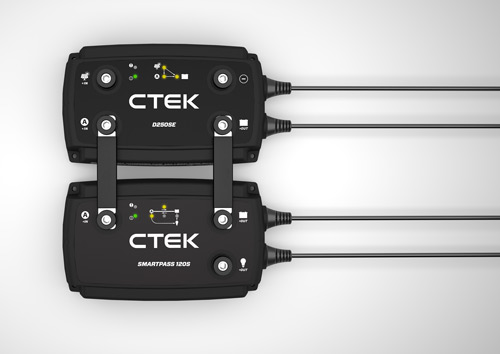Systems designed to protect starter batteries can leave secondary batteries starved of charge. The solution is simple.
Modern vehicles use smart alternators, which means they don’t engage until they are needed but they take their cues from the starter battery, says battery specialists Element 82’s John Wightman.
He says smart alternators monitor the voltage of the start battery and don’t start up until the voltage drops to around 25% depth of discharge. The ECU will be running directly off the battery, which saves the fuel which would otherwise be used turning the alternator.
But that could mean the alternator isn’t engaged for the first hour of a two-hour journey. Then the switching mechanism designed to charge house batteries, the voltage sensitive relay (VSR or VCR), will wait perhaps 20 minutes for the voltage in the starting battery to top up before activating to charge the second battery. By which time you’ve arrived at your destination or stopped for a break.
When you restart, the alternator stays off again until the starter battery voltage drops. “Essentially you can arrive at your destination with very little or no recharge of your second battery ever occurring,” says John.
It’s a problem for all vehicles with secondary batteries — boats, caravans or industrial vehicles with special equipment installed and it has been this way for 10 years.
But there is a simple solution, says John: install one of the new battery-to-battery or DC-to-DC chargers. They operate just like a plug-in mains power smart charger, but they get their power from the vehicle’s alternator. Importantly, they also supply current at the right voltage for the different types of house batteries — 14.4 for wet cell or 14.7 volts for AGM — and their state of charge.
“We can select for a different chemistry from the start battery, which is common for deep cycles secondary batteries,” says John.“We can provide everything from a 3A 12v charger up to 180A DC-to-DC charger in stepped voltages of 12, 24, 36 or 48-volt using up to a 5-stage charge profile.”

